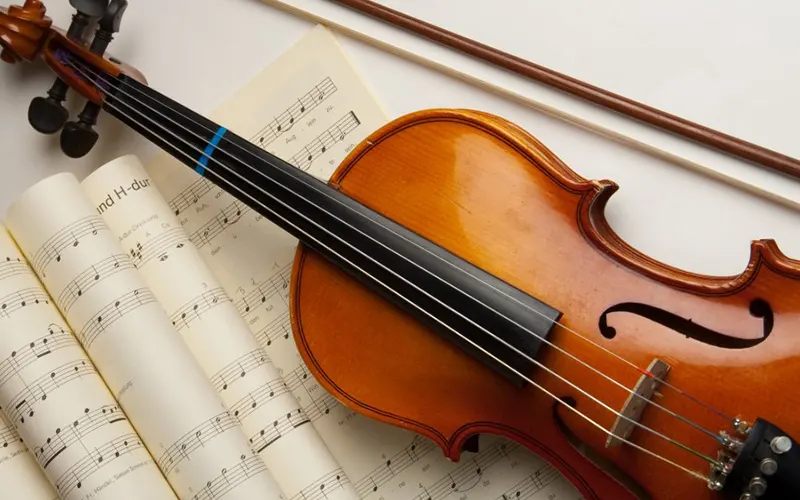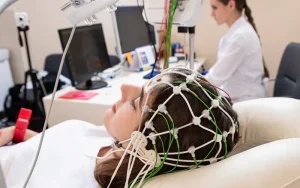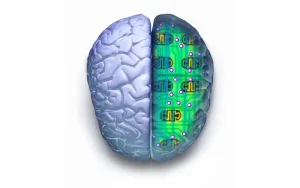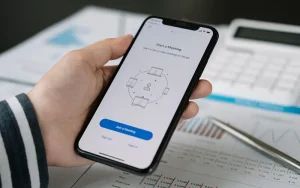During epilepsy testing, patients frequently endure heightened discomfort when their medication is intentionally reduced to induce seizures. Nevertheless, a recent study demonstrates that being exposed to live, improvisational viola music aids these patients in attaining a meditative state, a phenomenon corroborated by EEG readings.
This tranquil influence facilitates the continuation of testing and mitigates self-reported feelings of stress and anxiety. The findings hold encouraging prospects for non-pharmacological approaches in healthcare.
Key Points:
- Live, improvised viola music shifted patients’ brain wave frequencies into an alpha state, indicative of a serene, meditative state.
- The viola’s pitch range, aligning with the human “safe” vocal range, activates the brain’s calming mechanisms.
- Unlike listening to pre-recorded favorites, the live, tailored 40-minute music session conducted over FaceTime demonstrated clinical effectiveness.
Epilepsy patients face challenging circumstances during hospitalization for testing. As part of the procedure, they are required to temporarily halt or reduce their medications to induce seizures. This often leads to feelings of distress and anxiety, and some individuals find the experience so discomforting that they are unable to complete the testing.
However, when these patients were exposed to improvisational music — live performances by a responsive violist who adapted to their level of agitation in real-time — their brain wave patterns, monitored via EEG, transitioned to a more tranquil state, facilitating the continuation of testing. Additionally, patients reported a notable reduction in feelings of stress and anxiety following their clinical musical encounter.
Dr. Borna Bonakdarpour, the lead investigator and an associate professor of neurology at Northwestern University Feinberg School of Medicine, as well as a neurologist at Northwestern Medicine, remarked, “Their minds entered a state of meditation.”
“When they engaged with the external world, such as watching TV or using social media on their phone, their brain frequency averaged around 12 or 13 Hertz (beta waves). However, after the music session, it dropped to 8 or 9 Hertz, indicative of the alpha state.”
The study, published on September 1st, can be found in Frontiers of Neurology. The choice of the viola for this research was based on its pitch range, mirroring the human “safe” vocal range, specifically the two middle octaves. Research indicates that this range, often used in lullabies, activates the brain’s calming mechanisms.
According to Bonakdarpour, “There has been a scarcity of non-pharmacological interventions for epilepsy patients in the hospital, and we show that the patients benefited significantly from music intervention. Importantly, the patients’ self-reports correlated with objective EEG changes, which is something that had not been previously done in an epilepsy-monitoring unit.”
While the study involved only five patients, Bonakdarpour is in the planning stages for a larger clinical trial involving 30 to 50 patients.
Bonakdarpour suggested that the findings’ implications may extend to patients hospitalized for other reasons. He emphasized, “The utilization of music as a clinical tool is currently underutilized, both in outpatient settings and hospitals.”
In the initial study, 21 epilepsy patients were identified as potential candidates for the trial. Among them, five individuals were specifically selected due to reports of significant distress from nursing and social work staff. For these patients, listening to recordings of their preferred songs in isolation did not yield notable benefits.
Each participant in the study received a tailored 40-minute live music session over FaceTime, facilitated by a clinically trained violist in collaboration with a music therapist. The improvisational music, designed for clinical purposes, features unhurried, wandering melodies played at a deliberate pace. The improvisation occurs slowly, without a specific meter, presented in the form of two-minute-long sequences that conclude with a gradual tapering into silence.
The music was integrated into the Northwestern Medicine Telemusic Intervention program during the COVID-19 lockdown to alleviate distress among patients in the neurosciences unit at Northwestern Memorial Hospital. The broader study encompassed a total of 87 sessions conducted over a three-month period.
Read More : New Drug Shows Promise for Treatment-Resistant Epilepsy
Reference
https://neurosciencenews.com/epilepsy-viola-music-therapy-23856/










